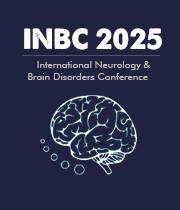Title : The technological impact of the Glasgow coma scale: A patent bibliometric analysis
Abstract:
Introduction: Since its development in 1974 by Teasdale and Jennett, the Glasgow Coma Scale (GCS) has served as a cornerstone in neurotrauma care, enabling standardized assessment of consciousness in patients with acute brain injury. While its clinical utility is well-established, the broader technological and intellectual property (IP) impact of the GCS has not been systematically quantified. This study applies a patent bibliometric approach to evaluate the global innovation landscape surrounding GCS-related technologies.
Methods: Using the Lens.org database, we conducted a global search for patents explicitly referencing the Glasgow Coma Scale. Each patent was categorized by filing jurisdiction, assignee type, legal status, and technological function. Classifications included patient monitoring systems, biological marker systems, data prediction models, therapeutic technologies, pharmacological compounds, educational tools, and health documentation platforms. Trends in technology type, legal status, filing frequency, and ownership were analyzed to assess growth and influence.
Results: A total of 129 unique GCS-related patents were identified, with filings steadily increasing since 1996 and peaking between 2020–2025. The majority were submitted through the World Intellectual Property Organization (WIPO, 53 patents) and the United States Patent and Trademark Office (USPTO, 44 patents), reflecting both global interest and strong domestic innovation. The leading contributors were academic institutions (33%) and medical device companies (23%), with notable involvement from researchers, hospital groups, and software developers. Technologically, most patents focused on patient monitoring (32%), biomarker-based detection (26%), and predictive modeling (26%), highlighting a diagnostic and data-driven focus. Despite this growth, over 50% of patents remain pending, and fewer than 20% are currently active, indicating a rapidly evolving and competitive IP space.
Conclusion: The Glasgow Coma Scale continues to inspire innovation far beyond its original bedside use. Our findings suggest that the GCS has become a foundational framework for the development of neuromonitoring devices, clinical decision support systems, and AI-driven prognostic tools. As neurosurgeons adopt and interact with these technologies, understanding the IP landscape can inform collaboration, commercialization, and clinical translation. This bibliometric analysis not only maps past trends but also highlights emerging opportunities for innovation in neurocritical care.



